Evidence for Evolution and an Old Earth, a Catholic
Perspective
The purpose of this article is to reveal the scientific evidence in favor of an old earth and (more controversial) macroevolution (defined as "the theory of universal common descent with gradual modification"). Much of my material I have borrowed from the comprehensive TalkOrigins.org site, as well as the books I have listed below. I will be quoting a young-earth Catholic creationist (who takes the first chapters of the book of Genesis quite literally) and respond to some of his criticisms and confusion over science, Catholic theology, and the Bible. Popes John Paul II and Pius XII on Evolution and Origins In October of 1996, Pope John Paul II addressed the Pontifical Academy of Sciences with a statement on science, evolution, and its implications for philosophy and theology. The message reads in part:
JPII begins this section by reminding us that the encyclical of Pius XII considered the theory of evolution worthy of investigation and in-depth study, but on the condition that evolution should not be considered "certain" or "proven" or that it contradicts or totally prescinds divine revelation. Before I continue with the JPII message, I want to summarize the teaching of the 1950 encyclical Humani Generis. Pope Pius XII can be summarized as follows:
Now we continue with the 1996 JPII message to the Pontifical Academy of Sciences:
One translation of the above text can be found at the Catholic Information Network site -- another translation from the French is James Akin's Nazareth site. NOTE: Some translations read: "more than one hypothesis" -- James Akin has confirmed that "more than A hypothesis" is the correct translation. A Vatican news report from 1996 clarifies:
The translation from the French that the theory of evolution is "more than a hypothesis" lines up with the context of the next sentence which states that "this theory [singular] has been progressively accepted by researchers, following a series of discoveries in various fields of knowledge" and further that the convergence of the results of independently-conducted scientific work "is in itself a significant argument in favor of this theory" [again singular]. JPII does later suggest "we should speak of several theories of evolution" but in the sense of the possible mechanisms of evolution (natural selection, etc) and the various philosophical constructs and viewpoints of people who accept biological evolution (materialist/naturalist, reductionist, spiritualist/theistic, etc). The relevant sections in the Catechism of the Catholic Church (1994) on origins, faith and science read:
According to the Catechism, there is no conflict between honest science and faith because God is the creator, ruler, and sustainer of both: the things of the world and of faith derive from the same God; science has splendidly enriched our knowledge of the age of the cosmos and the development of life; and religion, faith and revelation provide us with the meaning of our origins which is beyond the proper domain of natural science. I shall now discuss the scientific evidence for an ancient earth, then I will cover the evidence for macroevolution. See also Part 2: The Scientific Evidence for Evolution
The Case of the Missing Nuclides Before we discuss the specifics of radiometric dating, it would help to talk about some of the elements involved. There is a substantial literature on the abundance of various elements in the cosmos, drawing upon studies of the earth, the moon, and meteorites. From this list we can extract information about which of the isotopes of the various elements, known as nuclides, are found in nature at detectable levels. The half-life of an element (if you remember from your high school or college chemistry courses) is the time it takes for one-half of the atoms of an unstable element or nuclide to decay radioactively into another stable element or nuclide. When we strike from the list every nuclide that is continually produced by natural processes, we are left only with those that persist from the date of the formation of our solar system (from Kenneth Miller, page 69-72). What does this list tell us? (See an online periodic table of elements here) Listing of Persistent Nuclides by Half-Life
As seen above, every nuclide with a half-life less than 80 million years (8.0 x 107) is missing from our region of the solar system, and every nuclide with a half-life greater than 80 million years is present. That means the solar system is much older than 80 million years, since the shorter-lived nuclides have simply decayed themselves out of existence. Since a nuclide becomes undetectable after about 10 to 20 half-lives (Dalrymple, page 378), multiplying 80 million times 10 (or 20) gives us about 800 million years (or 1.6 billion years). The earth must be at least that old since these nuclides have disappeared from nature. For a more precise age of the earth, the technique of radiometric dating has been successfully used since the 1950s (i.e. C.C. Patterson of the California Institute of Technology in 1953 is considered the first scientist to calculate the true age of the earth at c. 4.5 billion years). Radiometric Dating Methods The ages of meteorites and rocks from the earth and moon are measured by radiometric dating, a family of techniques based on the spontaneous decay of long-lived naturally occurring radioactive isotopes. These radioactive parent isotopes decay to stable daughter isotopes at rates that can be measured experimentally and remain effectively constant over time regardless of physical or chemical conditions. Each parent-daughter pair constitutes an independent clock in which atoms of the parent are transformed at a constant and predictable rate into atoms of its daughter. The amounts of parent and daughter isotopes in a rock, along with the known rate of decay, provides the information necessary to determine the time that has elapsed since the rock formed (Dalrymple, page 79). Here is a table of the parent-daughter isotopes, their calculated half-life, and their known decay constants used to determine the ages of rocks and minerals. Principle Parent and Daughter Isotopes
Of the 339 isotopes of 84 elements found in nature, 269 are stable and 70 are radioactive. Eighteen of the radioactive isotopes have long half-lives and have survived since the elements of the solar system were created. These long-lived radioactive nuclides are the basis for radiometric dating (Dalrymple, page 80). The basic formulas used to calculate the ages are (warning, a little algebra and a logarithm here): Pt = P0 e-dt P0 =
number of parent atoms at some starting time Since P0 = Pt + Dt and Dt = the daughter atoms formed Substituting Pt + Dt for P0 we get Pt = ( Pt + Dt ) e-dt Now solving for t we get t = ( 1 / d ) loge ( Dt / Pt + 1 ) which is the basic radiometric-age equation and contains only quantities that can be measured today in the laboratory. If the rock incorporated some of the daughter isotope when it formed, then this initial amount of the daughter must be subtracted from the total amount measured. However, for the principal methods, the value of the initial daughter is either zero, negligible or not required (Dalrymple, page 84-86). A Catholic creationist in an Email to me states:
This is a convenient dismissmal of the science of radiometric dating (no doubt picked up from some young-earth creationist literature). Radiometric dating is not "based upon pure assumption and speculation." And Carbon-14 dating is not used to date the oldest rocks (the half-life of 14C is about 5,700 years and can be used to date objects up to around 50,000 years old). There are some assumptions involved, but they are eminently reasonable and scientifically justifiable. In my response to young-earther and geocentrist Robert Sungenis, I summarize Dalrymple's explanations of the scientific justifications for the assumptions involved, in particular (1) the constancy of decay rates, (2) the initial daughter product (the "original ratio") is not required in any of the isochron or concordia-discordia calculations, and especially (3) the thousands of radiometric dates published in the scientific literature year after year, using different radiometric dating methods, testing and confirming over and over again the data which all consistently converge on the same date: the earth was created 4.5 billion years ago. There are several types of radiometric dating methods with various accumulation clocks that are self-checking (especially with isochron or concordia-discordia techniques) when used to measure the age of rocks and minerals. These methods are the K-Ar (Potassium-Argon) Method, the Rb-Sr (Rubidium-Strontium) Method, the Sm-Nd (Samarium-Neodymium) Method, the Lu-Hf (Lutetium-Hafnium) Method, the Re-Os (Rhenium-Osmium) Method, and the U-Th-Pb (Uranium-Thorium-Lead) Methods. On the reliability of these methods, see the detailed TalkOrigins articles Isochron Dating FAQ and Radiometric Dating and the Geological Time Scale K-Ar (Potassium-Argon) Method This method is based on the decay of 40K to 40Ar and is probably the most commonly used radiometric dating technique available to geologists. It is the only decay scheme that can be used with little or no concern for the initial presence of the daughter isotope. This is because 40Ar is an inert gas that does not combine chemically with any other element and so escapes easily from rocks when they are heated. Like all radiometric methods, the K-Ar method does not work on all rocks and minerals under all geologic conditions. It works particularly well on igneous rocks that have not been heated significantly since their formation. It does not work on most sedimentary rocks because these rocks are composed of debris from older rocks. It also does not work on many metamorphic rocks because rocks of this type formed from other rocks under heat and pressure. The K-Ar method is of limited use for the dating of meteorites, lunar rocks, or the oldest rocks from the earth due to its susceptibility to resetting by later heating. The 40Ar / 39Ar variant of the method overcomes many of these problems (Dalrymple, page 90-94). Rb-Sr (Rubidium-Strontium) Method The Rb-Sr method is based on the radioactivity of 87Rb which undergoes decay to 87Sr with a half-life of 48.8 billion years. Rubidium occurs as a trace element in most rocks. Strontium is present as a trace element in most minerals when they form (unlike Argon, which escapes easily and entirely from most molten rocks). The Rb-Sr dating is done primarily with the "isochron method" which completely eliminates the problem of initial Strontium. Because of the long half-life of 87Rb, the Rb-Sr dating is used mostly on rocks older than about 50 to 100 million years, for only in these rocks has sufficient time elapsed for measurable quantities of 87Sr to accumulate. Because of its relative resistance to post-formation events, the Rb-Sr dating (by the isochron method) is used extensively to determine the ages of the oldest rocks in the solar system (Dalrymple, page 94-95). Sm-Nd, Lu-Hf, and Re-Os Methods In recent years the Sm-Nd (Samarium-Neodymium) method has appeared in the geological literature, and has become a common tool for geochronologic studies of old rocks and meteorites. The Sm-Nd method is more resistant to metamorphism than are other dating methods which gives it a decided advantage for age measurements of very old rocks. Ancient basalt and the achondrite meteorites contain so little K, Rb, and U that precise dating can only be done with the Sm-Nd method. The Lu-Hf (Lutetium-Hafnium) and Re-Os (Rhenium-Osmium) methods while infrequently used, provide some valuable data relevant to the age of meteorites (Dalrymple, page 95-97). U-Th-Pb Methods These methods are based on the radioactivity of 235U, 238U, and 232Th which all decay to different isotopes of Pb (Lead). Although these involve a decay series with intermediate radioactive daughter products, the decays of 238U to 206Pb, 235U to 207Pb, and 232Th to 208Pb can be treated as a simple one-step decay since each of the three series are entirely independent of the others and the half-lives of the intermediates are very much shorter than the three parents. Because of the problems of initial Pb and Pb loss the U-Th-Pb methods of dating are most often applied with the use of "isochron" or "concordia-discordia" diagrams which circumvent the initial daughter problems mentioned earlier (Dalrymple, page 99-102). Age of the Oldest Earth Rocks The Archean rocks (c. 2.5 to 4.0 billion years old) of Precambrian (c. 570 million years ago) earth history occur on all continents but over small and roughly equi-dimensional areas. Although subject to metamorphism and deformation long ago, these Archean cratons, also called blocks or shields, now constitute very stable parts of the present-day continents and except for the ravages of erosion, have undergone little internal change for hundreds of millions of years. A typical early Archean terrane can be subdivided into several broad categories of rock units, including gneisses, supracrustal sequences (greenstone belts), and intrusive rocks. Some 80 to 90 percent of Archean rocks are gneisses which occur as vast "seas" that surround the basement for both older and younger rocks. North Atlantic
The area near Godthaab, the capital of Greenland, is dominated by gneiss complexes of two distinct ages. The older complex is called the Amitsoq gneisses. Because of their antiquity, the early Archean rocks near Godthaab and Isua (about 100 km northeast of Godthaab) have been the objects of a great many radiometric age measurements, the effort being led primarily by S. Moorbath of Oxford University, who with his colleagues has spent more than a decade studying these rocks. The radiometric age data confirm the sequence of rock units as determined by field relationships, and show that the Isua supracrustals and the Amitsoq gneisses are some of the oldest rocks found so far on earth (Dalrymple, page 128-142). North America The Superior Province of North America is the world's largest known Archean crustal block (area about 2.6 x 106 km2). Two areas where the oldest gneisses occur have been studied in some detail. These include an elongate exposure within the Minnesota River Valley near Morton and Granite Falls and a small area exposed near Watersmeet in northern Michigan. The Morton Gneiss (in Minnesota) is a complex rock consisting of multiple rock units that were formed at different times and are now interlayered on a fine scale.
Australia The western part of the Australian continent consists of two Archean cratons surrounded largely by Proterozoic mobile belts. The Archean rocks of the Pilbara Block are exposed over an area of about 56,000 km2, but nearly half of the craton is covered on the south by Proterozoic sedimentary rocks, so its total area may exceed 100,000 km2. The formations that compose the Archean greenstones of the Pilbara Block are collectively called the Pilbara Supergroup. Perhaps the best preserved and most complete greenstone succession known is the Barberton greenstone belt. This remarkable sequence of Archean volcanic and sedimentary rocks is exposed in the Barberton Mountain Land in northern Swaziland and the southeastern part of the Transvaal Province of South Africa (Dalrymple, page 154-174). The oldest, reliably dated, in-situ granitoid rocks of magmatic origin (orthogneisses), regarded as broadly representative of the type of continental crust formed throughout the rest of earth history, mostly give ages in the range 3.65 to 3.75 billions of years old (Ga), and probably up to 3.81 Ga. The oldest reliable dates, from in-situ chemical and detrital sedimentary and volcanic rocks (i.e. supracrustal rocks), give ages in the range 3.71 to 3.81 Ga (from "The Oldest Rocks on Earth" by B.S. Kamber, S. Moorbath, M.J. Whitehouse in The Age of the Earth from 4004 BC to AD 2002, edited by C.L.E. Lewis and S.J. Knell [Geological Society, 2001], page 197, 198). Learn about the types of minerals here -- including Zircon (ZrSiO4, Zirconium Silicate), Ilmenite (FeTiO3, Iron Titanium Oxide), Pyroxene, Plagioclase (a form of Feldspar, NaAlSi3O8 abundant on the Moon), and many others. Radiometric Ages of Some Early Archean/Related
Rocks
Age of Moon Rocks
Nine missions, six from the United States and three from Russia, returned a total of nearly 382 kg of samples. This priceless material consists of crystalline rocks, breccias and soil, the latter in the form of both scooped samples and cores, from a variety of geological environments (Dalrymple, page 212). The following is a table of some radiometric ages calculated with different methods from the lunar rocks and material of the Apollo missions. Learn about the types of minerals here -- including Zircon (ZrSiO4, Zirconium Silicate), Ilmenite (FeTiO3, Iron Titanium Oxide), Pyroxene, Plagioclase (a form of Feldspar, NaAlSi3O8 abundant on the Moon), and many others. Radiometric Ages of Lunar Rocks
Age of Meteorites Most of the other measurements for the age of the earth rest upon calculating an age for the solar system by dating objects which are expected to have formed with the planets but are not geologically active (and therefore cannot erase evidence of their formation), such as meteorites. The following is a table of dates of meteorite groups (from Chris Stassen, see also his detailed Isochron Dating FAQ). Learn about the types of meteorites here (82% are stony Chondrites, about 8% are Achondrites such as Eucrites, 5% are Iron, etc). Whole-Rock Isochron Ages of Different Meteorite
Groups
As shown in the table, there is excellent agreement on about 4.5 billion years, between several meteorites and by several different dating methods. The accusation cannot be made that this represents selective use of data -- the table includes a significant fraction of all meteorites on which isotope dating has been attempted. According to Dalrymple (page 286), less than 100 meteorites have been subjected to isotope dating, and of those about 70 yield ages with low analytical error. Further, the oldest age determinations of individual meteorites generally give concordant ages by multiple radiometric means, or multiple tests across different samples (from Chris Stassen). Meteorites Whose Radiometric Ages Exceed 4.4
Billion Years
Summary of the Evidence for the Age of the Earth The development and refinement of modern instrumentation and radiometric dating methods based on the decays of isotopes of uranium, potassium, rubidium, samarium, rhenium, and lutetium to their respective daughter products lead, argon, strontium, neodymium, osmium, and hafnium beginning in the mid-1950s and continuing to the present finally produced the answer to the question of the antiquity of the earth. We can be confident that the minimum age for the earth exceeds 4 billion years -- the evidence is abundant and compelling. Rocks exceeding 3.5 billion years in age are found on all the continents, but four especially well-studied areas: the Superior region of North America, the Isua-Godthaab area of western Greenland, the Pilbara block in the northern part of Western Australia, and Swaziland in southern Africa, where rocks 3.5 billion years or more in age have been found, carefully mapped, thoroughly studied, and dated by more than one radiometric method. Meteorites are the oldest and most primitive rocks available for earthbound scientists to study. The majority of the 70 or so well-dated meteorites have individual Rb-Sr, Sm-Nd, Pb-Pb and 40Ar / 39Ar ages of 4.4 to 4.6 billion years. Internal and whole-rock isochron ages determined by Rb-Sr, Lu-Hf, Sm-Nd, Pb-Pb, and Re-Os methods, as well as other isotopic evidence, shows the major meteorite types were formed within a few tens of millions of years between 4.5 and 4.6 billion years ago. All hypotheses for formation of our solar system call for the planets, including earth and the asteroids, to be formed within a very short interval of time. Thus, the ages of meteorites are relevant to the age of the earth and suggest that the earth and the other solid bodies of the solar system formed about 4.5 to 4.6 billion years ago (Dalrymple, pages 398-401).
See also Part 2: The Scientific Evidence for Evolution BOOKS CONSULTED On the Age of the Earth and the Universe The Age of the Earth from 4004 BC to AD 2002 edited by
C.L.E. Lewis and S.J. Knell (Geological Society Special Publication No
190, 2001) On Creation/Evolution Darwin on Trial by Phillip E. Johnson (Intervarsity
Press, 1991, 1993) Young Earth Creationist Texts The Genesis Flood: The Biblical Record and its Scientific
Implications by John C. Whitcomb and Henry M. Morris
(Presbyterian and Reformed Publishing, 1961) See also Part 2: The Scientific Evidence for Evolution International Theological Commission on Creation and Evolution The Talk Origins Age of the Earth FAQs The Talk Origins Evolution FAQs P |
||||||||||||||||||||||||||||||||||||||||||||||||||||||||||||||||||||||||||||||||||||||||||||||||||||||||||||||||||||||||||||||||||||||||||||||||||||||||||||||||||||||||||||||||||||||||||||||||||||||||||||||||||||||||||||||||||||||||||||||||||||||||||||||||||||||||||||||||||||||||||||||||||||||||||||||||||||||||||||||||||||||||||||||||||||||||||||||||||||||||||||||||||||||||||||||||||||||||||||||||||||||||||||||||||||||||||||||||||||||||||||||||||||||||||||||||||||||||||||||||||||||||||||||||||||||||||||||||||||||||||||||||||||||||||||||||||||||||||||||||||||||||||||||||||||||||||||||||||||||||||||||||||||||||||||||||||||||||||||||||||||||||||||||||||||||||||||||||||||||||||||||||||||||||||||||||||||||||||||||||||||||||||||||||||||||||||||||||||||||||||||||
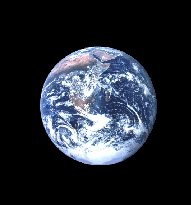 The
Evidence for an Old Earth
The
Evidence for an Old Earth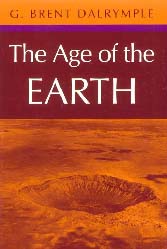
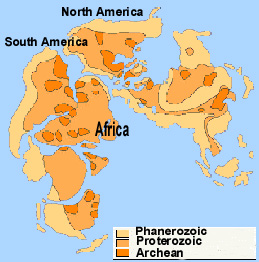 The
North Atlantic Archean craton includes parts of eastern and western
Greenland, part of the coast of Labrador in Canada, and small sections
of northwestern Scotland and northern Norway. Once a single block, this
Archean terrane was torn into sections when North and South America were
separated from Europe and Africa nearly 200 million years ago to form
the Atlantic Ocean. When rejoined (see diagram at right) the North
Atlantic craton consists of a roughly triangular area with sides about
600 km in length. The rocks of the craton are primarily (85%) granitoid
gneisses.
The
North Atlantic Archean craton includes parts of eastern and western
Greenland, part of the coast of Labrador in Canada, and small sections
of northwestern Scotland and northern Norway. Once a single block, this
Archean terrane was torn into sections when North and South America were
separated from Europe and Africa nearly 200 million years ago to form
the Atlantic Ocean. When rejoined (see diagram at right) the North
Atlantic craton consists of a roughly triangular area with sides about
600 km in length. The rocks of the craton are primarily (85%) granitoid
gneisses.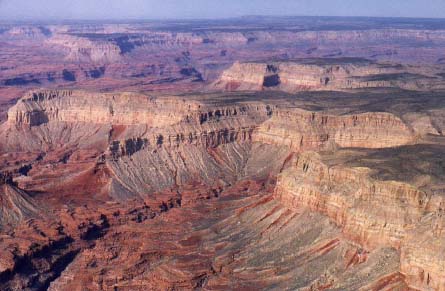 Picture
to the left is the
Picture
to the left is the 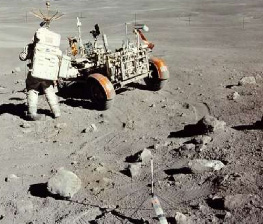 The
manned lunar missions had significant scientific worth for they gave
scientists an exciting opportunity to study rock samples collected from
another planet. Both the theoretical and experimental evidence is quite
good that the moon, the earth, along with the entire solar system formed
more or less simultaneously. Therefore, the age of the moon has a direct
bearing on the age of the earth. There are many rocks from the moon that
are in fact older than the very oldest rocks found on earth.
The
manned lunar missions had significant scientific worth for they gave
scientists an exciting opportunity to study rock samples collected from
another planet. Both the theoretical and experimental evidence is quite
good that the moon, the earth, along with the entire solar system formed
more or less simultaneously. Therefore, the age of the moon has a direct
bearing on the age of the earth. There are many rocks from the moon that
are in fact older than the very oldest rocks found on earth.